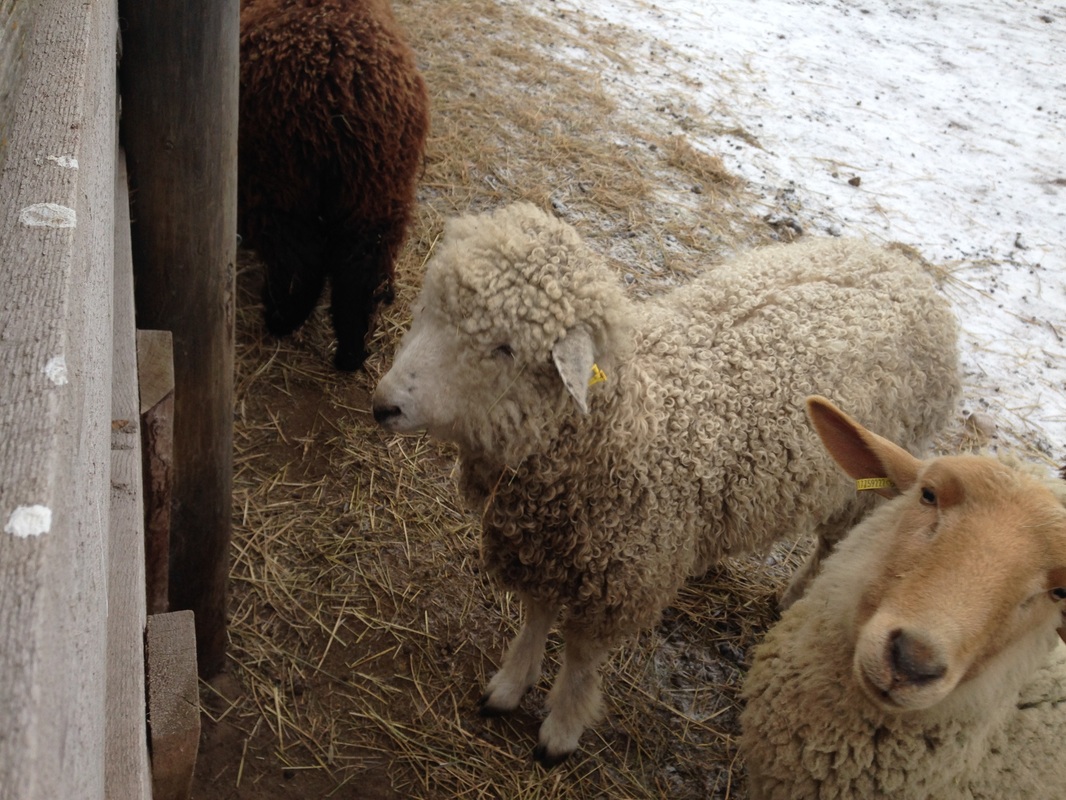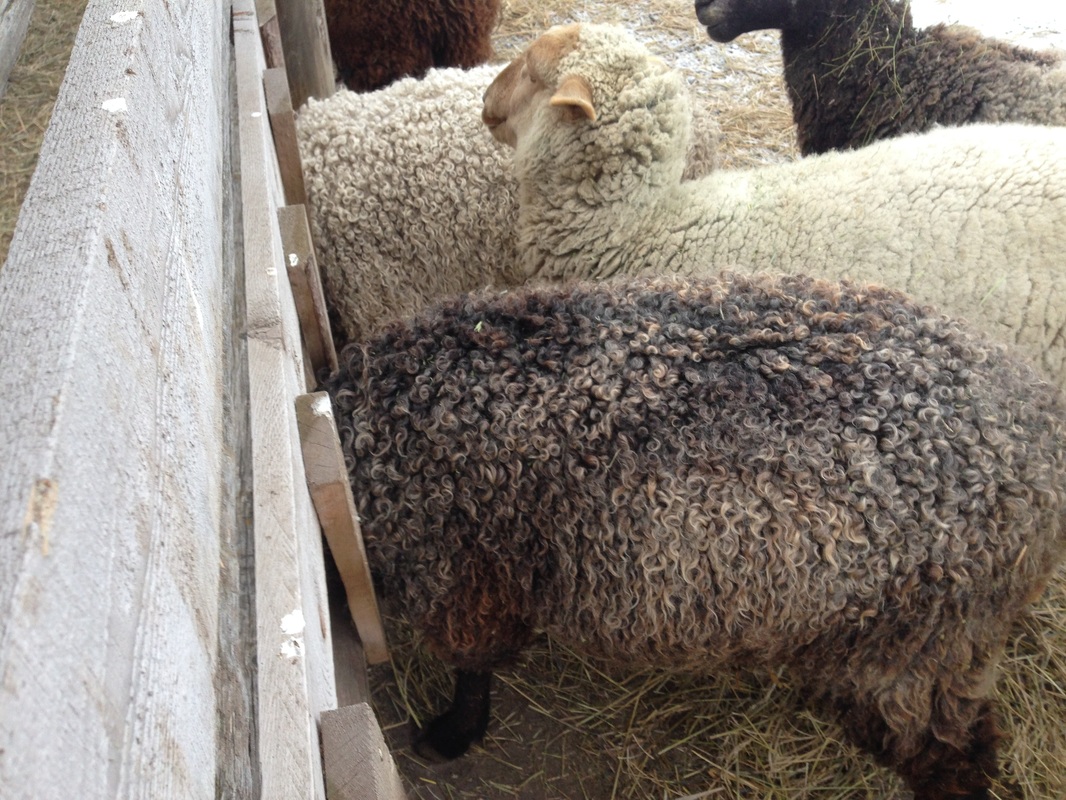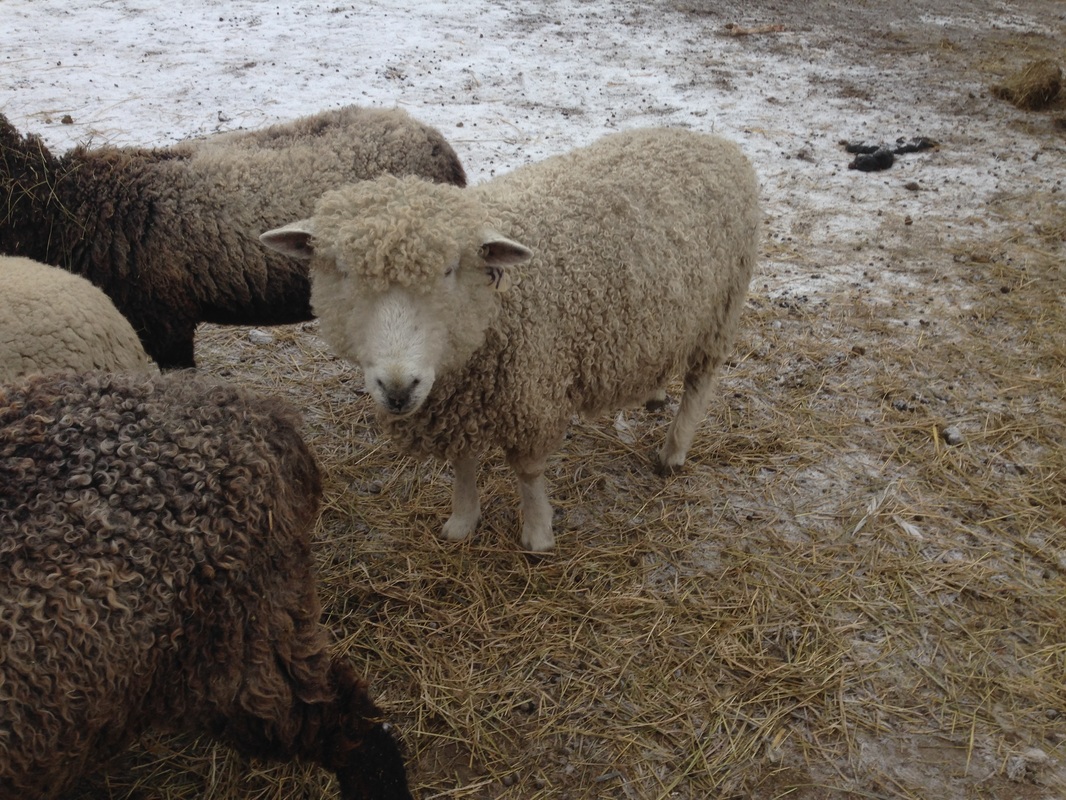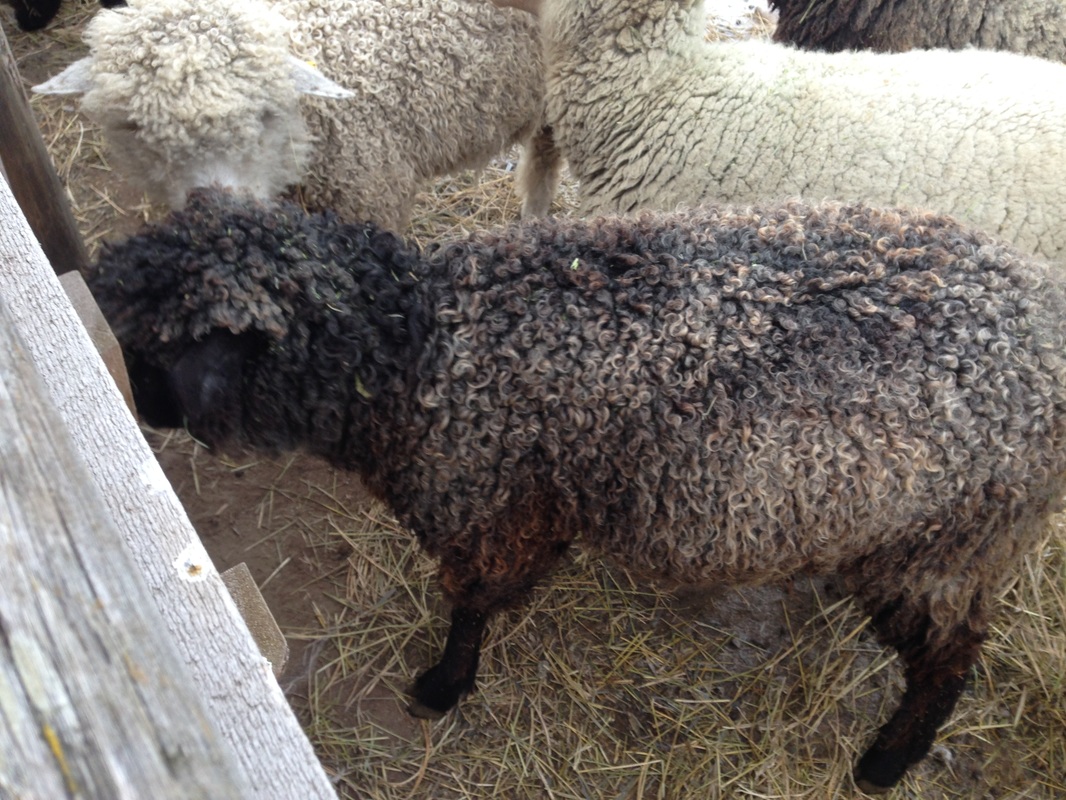The ram, Walter, was a very nice, docile and quiet guy, halter trained and easy to manage. The Cotswold rams are not aggressive, as a matter of fact, the breed is quite docile and friendly. Walter looked fine to me when he arrived here, but he seemed a bit thin. I did not want to feed grain to my sheep so did not. Their hay was very good that year. One of the ewes, 43Y was larger and did so much better than the other two. She maintained her weight without grain and managed her wormload without the need for chemical inputs. Walter and the other two ewes could not do without the grain, it seems and also needed to be treated for worms. I sold the ewes and one ram lamb from one of the ewes with Walter as the sire. Walter bred most of the flock the second year he was here and the Cotswold cross sheep were better than the Cotswolds themselves, more robust, with some twins and much quicker growing.
Walter had an infection that would not get better and the following year he passed away. I really loved that big old ram. I held his head when he was going and covered him with straw so he would not be cold. He has been to the vet's 4 times and in total ended up costing me over $1200. I would not do that again. Now I understand that it is better to let them go. Walter never did get much better after the mutant staph infection was diagnosed. So now there is no Cotswold ram, but I have 43Y, one of the original three ewes and three other ewes, lambs from the ewes prior to being sold.
The sheep are really lovely, but I have been trying to sell them to lighten my load on the farm. Today they were together and I was able to snap a few photos. Liza, a coloured Cotswold, has such beautiful fleece. Most Cotswolds are white, as my other three ewes are. If I was going to remain a farmer, I would look for a new Cotswold ram. There is little to no market for the sheep and since they grow too slowly to produce market lambs in the first year, they are not a good choice for a meat/wool operation. But, if I could keep their fleece clean, there is certainly a market for their fleece. Spinners are becoming very fussy and only want to purchase coated sheep with ultra clean fleece. I don't blame them, because it is a long process to clean the vegetative matter out of a contaminated fleece and that happens just from eating hay, really.
Take a look at these beautiful girls with curls. Lovely, aren't they?






 RSS Feed
RSS Feed